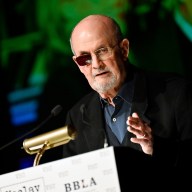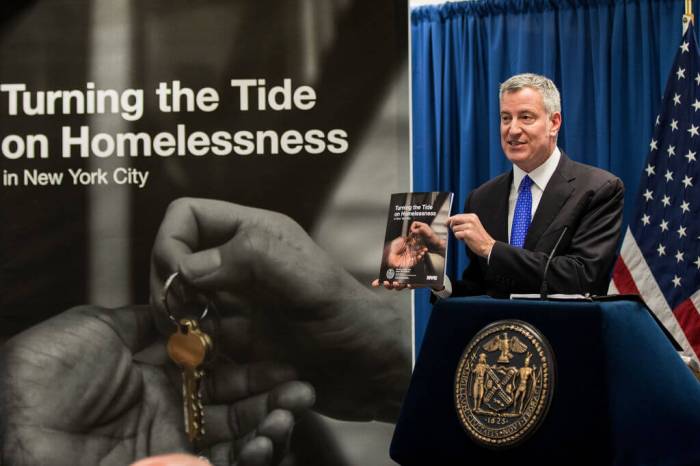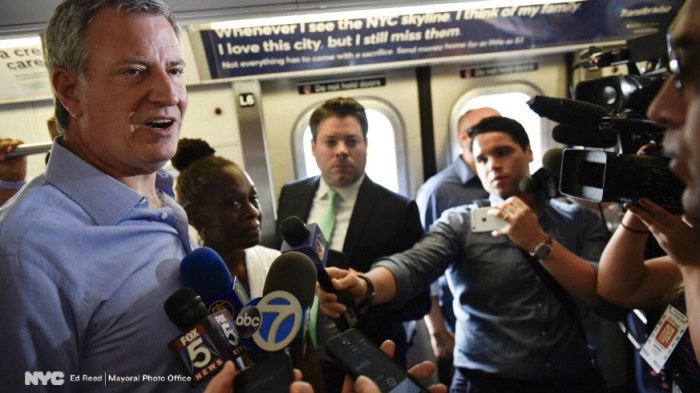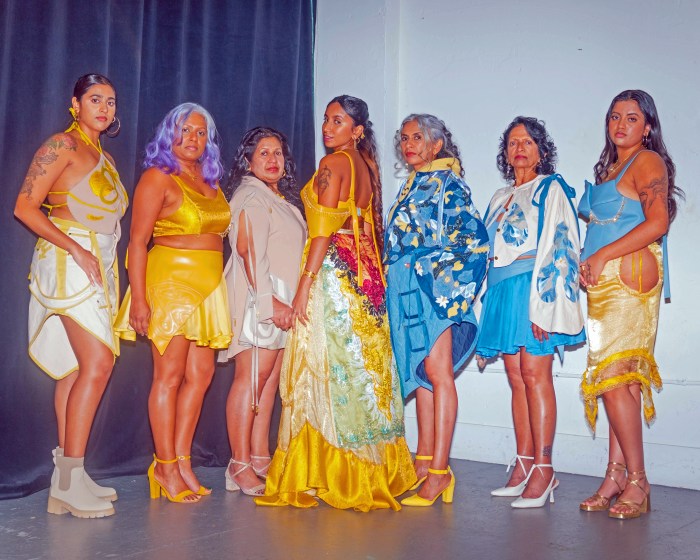A classroom full of 18 teens was quiet one Saturday afternoon in Greenwich Village, save for some keyboard taps.
Mufasa Peterson was finishing a typing test, clicking most keys with his index finger.
“Let me show you something,” said Jerelyn Rodriguez, one of the teachers in the room, as she suggested where Peterson could rest his fingers to type faster.
RELATED: Tech training helps young NYers launch lucrative careers “I can’t,” he said,” my fingers are too long.”
Rodriguez suggested, “That’s why you have to practice.”
Peterson, 18, is one of about 200 foster children from around the city taking part in a new program designed to give them consistent access to technology at a time when New York City schools are moving towards an increasingly digital landscape. Last week, the de Blasio administration announced a comprehensive plan to offer computer science classes to all public school students by 2025, compared to the less than 5 percent of students with access to those classes today. RELATED: Women make up 40% of NYC tech workforce: Report The push towards offering coding classes to all students is daunting enough, but potentially more so for scores of young New Yorkers whose only access to the Internet is via smartphone.
“Foster care children are really the disadvantaged of the disadvantaged,” New York Foundling Chief Operating Officer Bethany Lampland told Metro. “It’s very difficult for students to take advantage of that sort of education when they come to the table already behind.” To that end, Lampland helped design the Foundling’s two-part initiative to help many of the approximately 14,000 children in foster care across the five boroughs catch up with their friends and classmates. Currently fully funded by donations to New York Foundling, the program targets both kids currently in the foster system and young adults who age out and might need help to bridge a gap in technology skills. RELATED: Where to learn to code for free in New York The first part of the program invited 200 eligible children as young as 12 years old to its digital inclusion program. Over the course of three weekend classes, each student will learn basic computer and Internet skills, eventually graduating to a quick lesson in coding. At the same time, their foster parents can also take three modified classes with their own laptop. Each household will then receive a personal WiFi devices with free Internet service for up to four years. The student is able to keep their own new computer as soon as they finish the last class. After all, Lampland said, the program was not just designed to handout free computers and Internet access.
Not only will each student have the tools and basic knowledge to excel in the classroom and beyond, but Lampland said the foster parent will hopefully take what they learn and use it as they take care of their current and future foster kids. The second part of the program is designed for 18- to 24-year-olds who are interested in tech careers and want some help breaking into the industry. Working with vocational groups Per Scholas, Year Up or General Assembly, up to 20 young adults will get hands-on training and support to join New York’s booming tech sector. “There’s really no reason that our gifted and tenacious young people shouldn’t have opportunities and careers, even if they’re not college bound,” Lampland said.
Last Wednesday, Mayor Bill de Blasio said his administration would match every dollar donated to the $81 million public-private partnership to offer coding classes in elementary, middle and high schools. Foster parent Nathaniel Ciscart, who attended the parent session, also applauded the mayor’s efforts.
Even though he’s pretty confident in his computer skills, he said he wanted his foster child Jatiese, 15, to be just as confident while also safe on the Internet.
“In the long run, the lack of knowing how to to use technology correctly can be a real hinderance,” Ciscart said. “The challenge comes from not having the tools now.”
After his first class, Mufasa Peterson said he pretty much knew most of what was covered in the first class. Peterson just graduated high school but said he came down from the Bronx to learn whatever else he can as he begins to break into the workforce. “I want to learn what I can so I can also pass it on to others,” he said. “I’m trying to be a positive role model.”
Correction: An earlier version of this story said the job placement program was for 18- to 21-year-old applicants. It is availalbe for students up to the age of 24. Metro sincerely regrets the error.
















